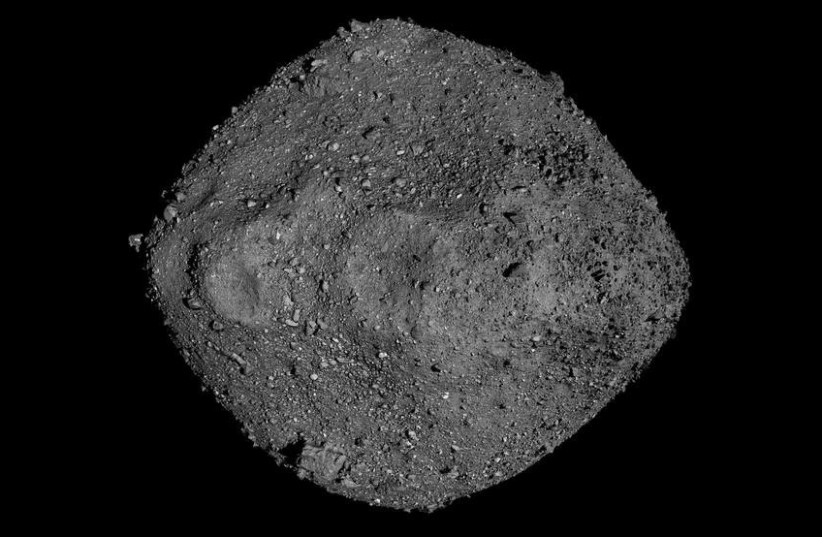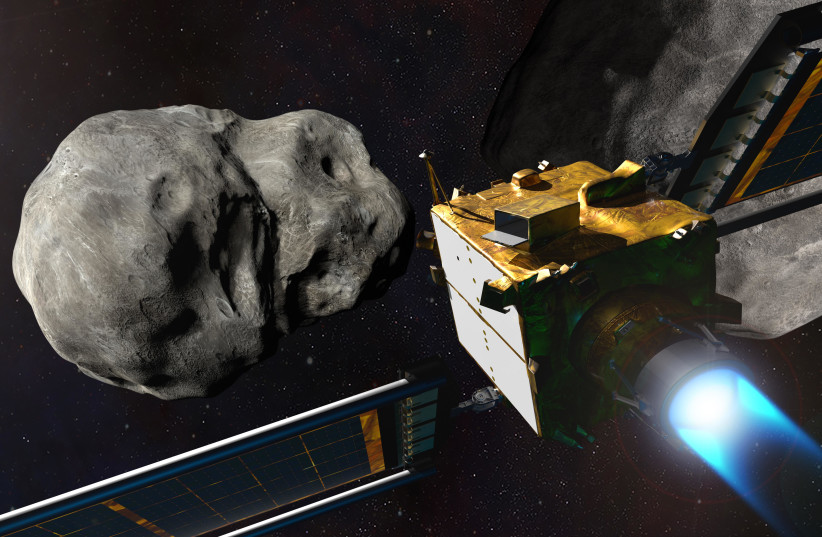
Asteroid 2019 XS measures around 100 meters, just a bit smaller than a soccer field, per FIFA’s regulations. But unlike the soccer balls in Qatar, this asteroid won’t score any goals on Earth.
By AARON REICH
An asteroid just slightly smaller than an average soccer field is set to pass by the Earth this Thursday, according to NASA’s asteroid tracker.
The asteroid has been designated 2019 XS, according to the Center for Near-Earth Object Studies (CNEOS) at NASA’s Jet Propulsion Laboratory (JPL).
The asteroid will pass by earth just days before the FIFA World Cup in Qatar, is close in size to the large grassy fields used in soccer matches across the world. But unlike the soccer balls, this asteroid isn’t likely going to score any goals on Earth.
How big is the asteroid coming toward Earth in 2022?
According to estimates by NASA, asteroid 2019 XS has an estimated diameter ranging from 45 meters to 100 meters.
To put that in context, a standard soccer field (or football pitch, for non-American readers) is 105 meters, according to FIFA regulations.

And needless to say, a soccer ball doesn’t even come close in size. In fact, asteroid 2019 XS is around 454.5 standard soccer balls.
Interestingly, the FIFA World Cup is often associated with balls being kicked at high speeds across large distances. But while these balls may be fast, this asteroid is much faster.
CNEOS clocked asteroid 2019 XS’s velocity as being around 11.87 kilometers per second, or 42,732 kilometers per hour. To put that speed in perspective, that’s 13 times as fast as a rifle bullet.
Asteroid 2019 XS is what is known as an Apollo-class asteroid. This means its orbit around the Sun can overlap with Earth’s own orbit. As such, there is, in theory, a chance that it will overlap at the same time, causing an asteroid collision.
But that isn’t going to happen now.
To put this in perspective, the Moon orbits the Earth at an average distance of 340,000 kilometers. But asteroid 2019 XS will be flying past the Earth at a distance of well over 6 million kilometers, which, while somewhat close on a cosmic scale, is much farther and is in no danger of actually hitting us.
What would happen if the asteroid actually hit the Earth?
According to research from the Davidson Institute of Science, the educational arm of Israel’s Weizmann Institute of Science, an asteroid 140 meters in diameter or more would release an amount of energy at least a thousand times greater than that released by the first atomic bomb if it impacted Earth.
An even larger asteroid that’s over 300 meters wide – like the Apophis asteroid – could destroy an entire continent. An asteroid over a kilometer in width – like asteroid 138971 (2001 CB21), which passed the Earth in early March 2022 – could trigger a worldwide cataclysm.
At around 100 meters in size, asteroid 2019 XS could cause serious harm and destruction if it hit the Earth, but it wouldn’t be Earth-shattering.
But as for the question of whether an asteroid will ever hit the Earth in 2022, the answer is yes. Or rather, it already happened.
Back in March 2022, a small asteroid around half the size of a giraffe known as 2022 EB5 hit the Earth just hours after its discovery. But given how small it was, it didn’t exactly result in any damage.
When is the next asteroid predicted to hit the Earth?
Not for a very, very long time. NASA has checked the numbers, and according to them, the Earth is safe from any catastrophic asteroid impacts for the next century, meaning no asteroid-induced Armageddon is on its way.

Which asteroid could potentially hit Earth?
Scientists don’t know for sure, but there are a few candidates for the most dangerous asteroid for the planet.
One of the most dangerous asteroids at the time of writing is Bennu, a gigantic 500-meter-wide asteroid that has an orbit that can cross with Earth’s own.
If this asteroid impacted the Earth, the result would be catastrophic – but as far as NASA is aware, this won’t be for a long time, if ever.

Do we have any way to stop an asteroid from hitting the Earth?
We just might, thanks to the hard work of scientists around the world.
The field of planetary defense is specifically organized to find ways of keeping the Earth safe from asteroids and scientists at NASA and across the globe are hard at work trying to do just that.
Most notably, this has involved pioneering the exciting technique of asteroid deflection, which uses kinetic energy through vehicular collision to ever so slightly change an asteroid’s orbital path, meaning it would, in theory, no longer be set to crash into Earth but instead fly past it.
In layman’s terms, NASA decided to make a spacecraft punch an asteroid to make it move out of the way.
In fact, that is exactly what recently happened in September in NASA’s landmark Double Asteroid Redirection Test (DART) Mission, which tested out this theory on a faraway asteroid Dimorphous in the Didymous system.
And according to the results, the DART Mission was a success, managing to alter the asteroid’s orbit.
Like a goalie, DART is meant to help keep objects from reaching the goal, in this case keeping asteroids from hitting Earth.
And unlike in the World Cup, there are no penalty shots.
Source: JPOST